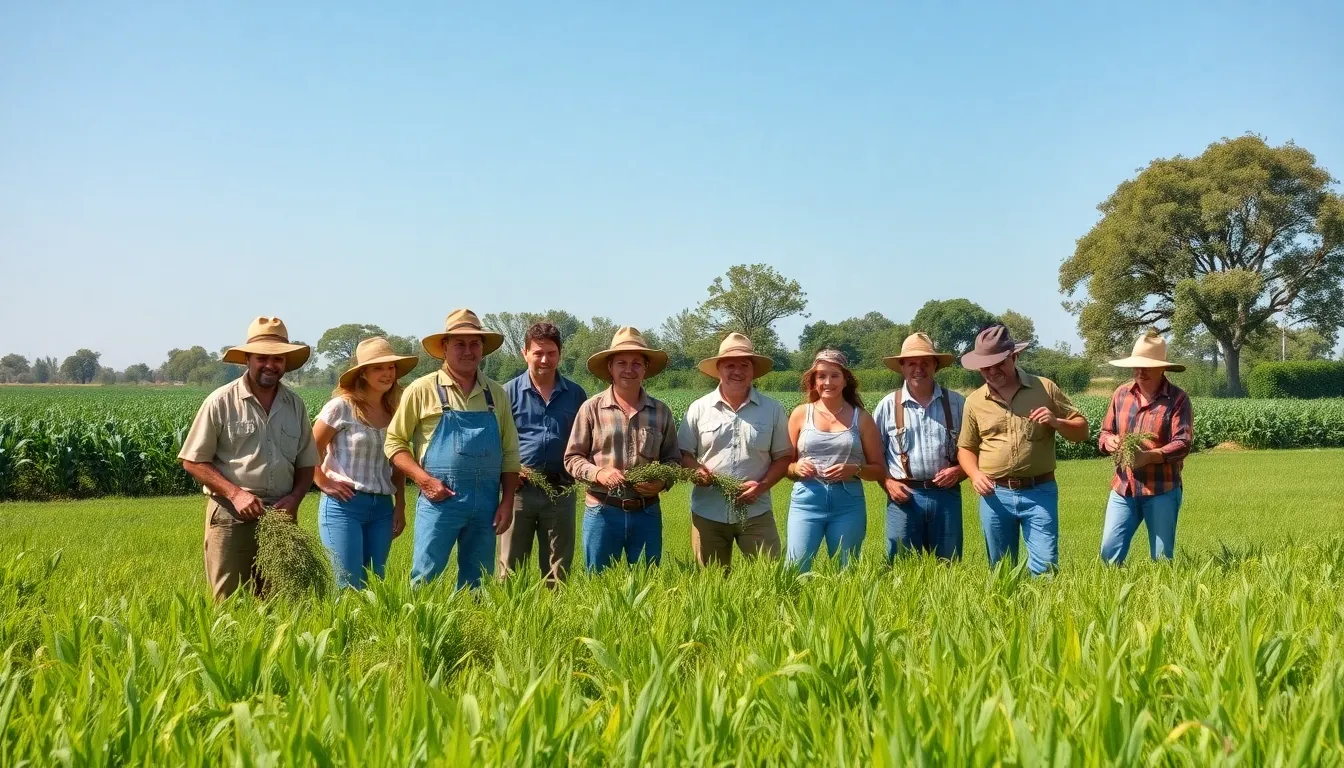Table of Contents
ToggleIn a world where every penny counts, the mantra “save and grow” has never been more relevant. Imagine turning your spare change into a financial powerhouse, all while keeping your sense of humor intact. It’s not just about stashing cash under the mattress; it’s about smart strategies that make your money work harder than a caffeinated squirrel on a treadmill.
Whether you’re a seasoned saver or just starting out, finding the right balance between saving and investing can feel like trying to juggle flaming torches. But fear not! With the right tips and tricks, anyone can master the art of saving while watching their wealth blossom. Get ready to dive into a world where saving isn’t just a chore but an exciting journey toward financial freedom.
Overview of Save and Grow
The “save and grow” philosophy emphasizes building wealth through mindful saving and strategic investment. This approach promotes the transformation of small, consistent savings into substantial financial growth over time. Readers often find themselves encouraged to consider their spare change as a valuable tool for wealth accumulation, rather than just a minor excess.
Balancing saving and investing can pose challenges, particularly in the current economic landscape. Strategies do exist that simplify this process. For example, setting up automatic transfers to savings and investment accounts fosters consistent savings without the need for ongoing decision-making. Utilizing apps that round up everyday purchases can also lead to noteworthy savings with minimal effort.
The impact of compound interest cannot be overstated. Small amounts saved today can grow significantly, especially when invested wisely. Utilizing tax-advantaged accounts like IRAs or 401(k)s enables individuals to enhance their savings further. Each dollar invested today holds the potential for future growth and financial independence.
Engaging with budgeting apps offers another avenue for improvement. These apps can track spending and highlight areas where individuals can save more. By dedicating a portion of their income to growth-oriented investments, users actively participate in their financial future.
Ultimately, the journey toward financial freedom becomes more enjoyable with the right mindset. Emphasizing both saving and investing ensures that individuals harness the full potential of their financial resources. As more people adopt the “save and grow” philosophy, the path to wealth becomes clearer, promoting a healthier relationship with money.
Key Principles of Save and Grow

The “save and grow” philosophy centers on strategic approaches that enhance both saving and financial growth. Key principles include sustainable agriculture practices and their economic benefits.
Sustainable Agriculture Practices
Sustainable agriculture emphasizes methods that increase productivity while conserving resources. Crop rotation enhances soil health, promoting biodiversity and preventing disease. Organic farming reduces chemical use, protecting ecosystems and promoting healthier produce. Integrating agroforestry combines agriculture with tree planting, ensuring higher yields while sequestering carbon. These practices not only bolster environmental health but also contribute to long-term financial stability for farmers, creating a robust cycle of saving and growth.
Economic Benefits
Economic benefits arise from adopting the “save and grow” approach, creating pathways for wealth accumulation. Implementing sustainable agriculture can lead to better crop yields, translating into increased income for farmers. Enhanced productivity often reduces costs associated with pesticide and fertilizer use, fostering financial savings. Investing in sustainable practices attracts new markets and consumers interested in environmentally friendly products. Ultimately, these economic advantages contribute to a more resilient financial landscape for individuals and communities.
Implementing Save and Grow Strategies
Adopting effective “save and grow” strategies can significantly enhance financial health. This section examines practical examples and the challenges involved.
Case Studies
Numerous individuals benefit from the “save and grow” approach. One entrepreneur saved $50 monthly for two years, investing these funds in a diversified portfolio. After this time, the investment grew to over $1,500 due to compound interest. Another case features a family using a budgeting app to allocate funds for savings in their grocery purchases. This strategy garnered them an extra $200 annually, enhancing their ability to invest in retirement accounts. These examples illustrate how consistent, mindful practices lead to financial growth.
Challenges and Solutions
Implementing “save and grow” strategies presents difficulties. Many individuals face the temptation to spend rather than save. Integrating automatic transfers for savings can mitigate this impulse. Unexpected expenses hinder saving efforts as well. Creating an emergency fund helps tackle these situations better. Moreover, navigating investment options can be overwhelming. Seeking financial advice or utilizing user-friendly apps aids informed decision-making. Addressing these challenges ensures a smoother journey towards achieving financial goals.
Impact on Communities
Communities experience significant benefits when individuals embrace the “save and grow” philosophy. Increased financial literacy emerges as residents become more aware of money management strategies. Saving becomes a collective endeavor when families share budgeting knowledge and investment tips.
Economic resilience strengthens as local businesses flourish. For example, entrepreneurs who save and invest generate jobs and contribute to community growth. Healthy local economies feature businesses that thrive on reinvested savings, providing essential services and products.
Sustainable agriculture practices enhance community well-being, promoting environmental health and economic stability. Farmers who adopt crop rotation and organic farming improve soil quality, elevating crop yields. Increased produce leads to better food access for residents and boosts local markets.
Access to local markets generates new opportunities for farmers. Selling environmentally friendly products attracts health-conscious consumers, fostering a cycle of savings and growth. Increased income across farming communities leads to improved lifestyles and enhanced community cohesion.
Partnerships between banks and community organizations encourage saving. Financial institutions offer workshops and resources aligned with the “save and grow” philosophy. Such support builds a strong foundation for sound financial practices among residents.
Educational initiatives increase awareness of saving and investing benefits. Schools and community centers may host programs that teach basic financial concepts from an early age. Young people armed with knowledge can make informed decisions, positively impacting their communities.
Communities that prioritize saving and investment cultivate a culture of support and growth. With shared goals, members can encourage one another to pursue economic opportunities. Collective efforts enhance overall community wealth, contributing to a more stable financial future.
Embracing the “save and grow” philosophy can transform the way individuals approach their finances. By focusing on consistent savings and strategic investments, anyone can unlock the potential for substantial wealth accumulation. This mindset not only paves the way for personal financial freedom but also fosters a sense of community resilience.
As more people adopt these practices, the ripple effects can lead to stronger local economies and enhanced support networks. With the right tools and strategies in place, achieving financial goals becomes a more enjoyable and attainable journey. Ultimately, the “save and grow” approach empowers individuals and communities alike to thrive in an ever-evolving economic landscape.




